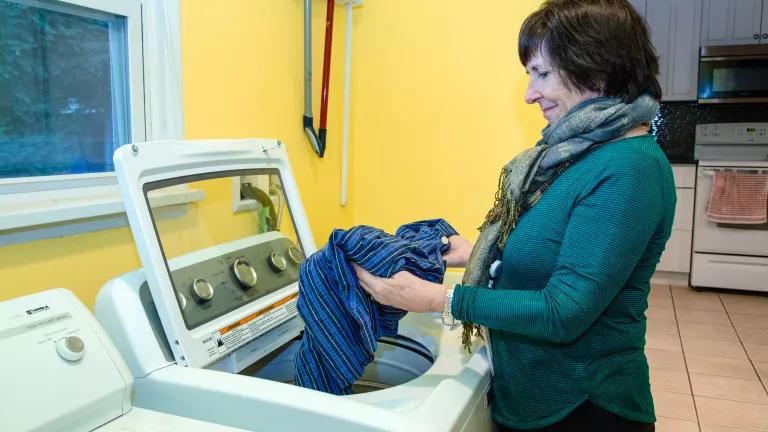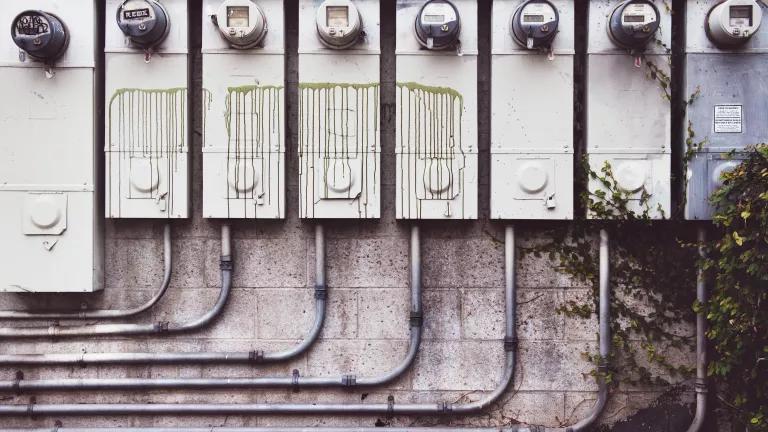State Lawmakers Support Strong Federal Efficiency Standards

While federal lawmakers have closed up shop for their August recess, state lawmakers from across the country held a major legislative summit in Boston last week. At the National Conference of State Legislatures, members approved a new resolution urging Congress and the Department of Energy (DOE) to fully fund the federal energy efficiency standards program—and to update and amend efficiency standards on time.
Federal energy efficiency standards help us heat, light and cool our homes; run our businesses; and use more electronic devices while also lowering our energy bills and slashing greenhouse gas and other forms of air pollution. Launched by bipartisan legislation that was signed into law by President Reagan, the DOE’s energy efficiency standards program ensures that refrigerators, washing machines, and other major appliances and equipment use less energy while providing the same level of comfort and service. The standards, which are updated on a timeline set by Congress, already save the average household $500 every year on utility bills. By 2030, the cumulative savings for all Americans will reach an astounding $2 trillion.
In addition, states can also play an important and complimentary role in setting energy efficiency standards for appliances and products that are not yet covered by the federal program. Eleven states (including Vermont, which sponsored the state resolution) have established their own state efficiency standards for one or more products. According to a recent report from the Appliance Standards Awareness Project, states could adopt efficiency standards for at least 21 more products, which have the potential to provide $113 billion in net savings for consumers and businesses.
Yet despite the benefits of energy efficiency for consumers, businesses, and the environment, the Trump Administration and some lawmakers in Congress seem bent on gutting energy efficiency programs. The U.S. House recently passed a budget proposal that would cut the budget for the DOE’s Office of Energy Efficiency and Renewable Energy (EERE) in half, and the DOE itself has been illegally delaying the final publication of several standards, which had been created and approved after a years-long, collaborative process involving manufacturers, DOE staff and environmental groups. An NRDC poll released last week shows that Americans strongly oppose the Trump administration’s efforts to eliminate energy efficiency programs by a margin of greater than two-to-one.
State lawmakers understand the benefits of efficiency
State lawmakers, in contrast, aren’t eager to let their constituents’ energy savings wither away. In Vermont, household savings due to federal efficiency standards amounted to a substantial $603 per family in 2015. That’s enough to free up spending on things like groceries, medicines, and school supplies.
Business bottom lines benefit, too. Across the country, businesses save about $23 billion annually because of the federal efficiency standards—money which, as the resolution rightly points out, can be invested in jobs or spent in local economies. Even small businesses, which spend $60 billion a year collectively on energy, can save 10 to 30 percent on utility costs, boosting bottom lines and improving the work environment for employees.
On top of these savings, federal efficiency standards ease pressure on state coffers. When local energy and water use stays constant or even decreases, state lawmakers don’t need to tap into strained budgets to find money for expensive new power plants or water treatment facilities—or for cleaning up air and water pollution created by dirty energy use. The four standards being held up by the DOE are expected to save 98.8 million metric tons of carbon dioxide over a 30-year period, alone—the equivalent of the annual emissions of about 20 million cars.
Standards are good for U.S. manufacturers and jobs
Efficiency standards stimulate innovative technologies, giving American manufacturers a competitive edge in our global market. More efficient products are more likely to be manufactured in the United States. An administration that is serious about supporting local manufacturing would fully support the standards that save consumers and businesses money and give American products a competitive edge.
For the past 30 years, the DOE’s energy efficiency standards program has proven to be a simple and cost-effective way to save money, cut emissions, and boost competitiveness. State lawmakers know these standards are good for American families, good for American business and good for the environment. It’s high time that the Trump administration and Congress recognized these facts. Come September, this program needs to be fully funded by Congress and supported by the DOE.



